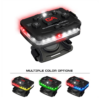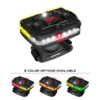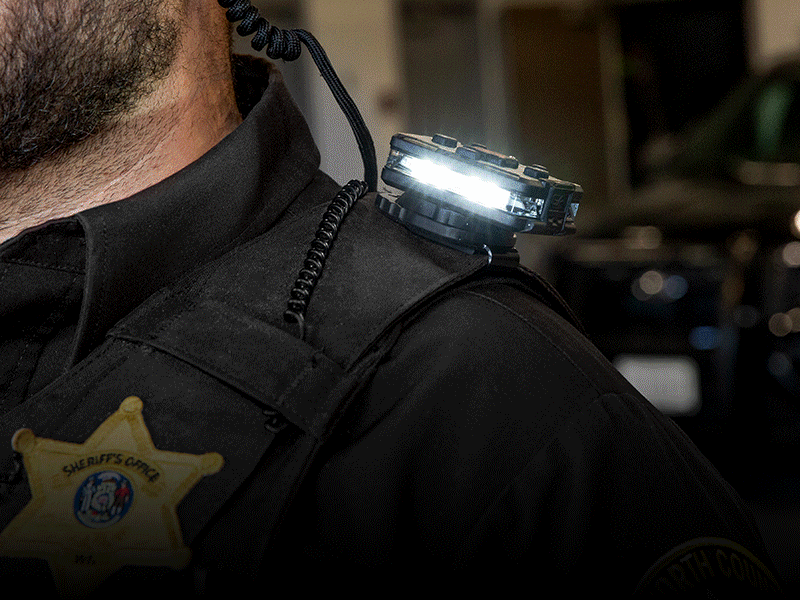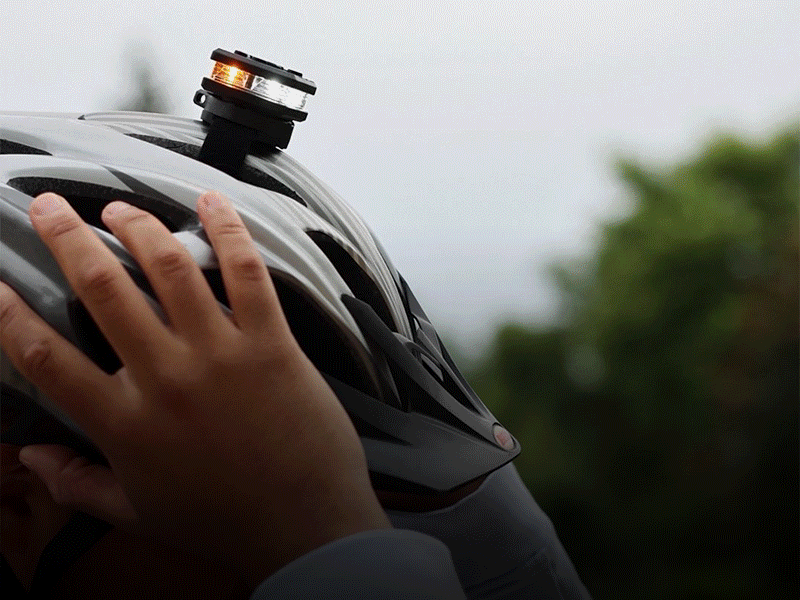Washington Emergency Vehicle Light State Statutes
Washington Emergency Vehicle Light State Statutes
Washington laws allow the use of emergency lights and siren by certain vehicles. The same law clearly specifies the requirements that should be used for emergency vehicle lighting. Therefore, emergency vehicle drivers in Washington should become familiar with the laws in place before installing emergency lights on their vehicles. The guide will address requirements for emergency lights for all forms of emergency vehicles in Washington.

Washington Authorized Emergency Vehicles
Authorized Emergency Vehicles in Washington are defined in Revised Washington Code (RCW) 46.04.040: “Authorized Emergency Vehicles” means any vehicle of any fire department, police department, sheriff’s office, coroner, prosecutor’s office, Washington State patrol, public or private ambulance service not required to be classified, registered or automatically registered The general rules on using emergency lights in Washington are set out below.
General rules concerning the use of emergency lights in Washington
All emergency lights in Washington must comply with the RCW 46.37.320 standards. The requirements include that
- they must comply with the Federal Motor Vehicle Safety Standards
- They must comply with the specifications laid down by the Society of Automotive Engineers
- They must be certified to comply with the standards laid down by regulatory bodies such as the American Association of Motor Vehicle Administrators and the American National Standards Institute.
Use of head light flashing systems
The blinking systems must meet the standards set out below.
- They have to be designed in such a way that the head light system normally operates even when the lights fail to flash.
- Their circuits should have a conspicuous indicator light that indicates when and when the system is off.
Only the high beams from the head light should flash through their circuit. - Each side should have a flashing rate of between 60 and 120 flashes per minute.
- When the light is set to high-beam mode, they must have a mechanism to stop flashing and provide enough illumination. The lighting should come from both headlamps.
Colors of emergency light specific to vehicles.
Under RCW 46.37.190, all permitted emergency vehicles must have at least one red light. In normal sunlight conditions the red light generated by the lights should be visible from more than 500 feet. In addition, authorized emergency vehicles under WAC 204-21-130 are allowed to have flashing white or amber lights. The color specifications for specific automobiles are as follows.
Law enforcement/police vehicles (WAC 204-21-130)
All police vehicles must have one blue light. Additionally, these vehicles may have flashing amber, white, or red lights, at the discretion of the operator.
Fire department vehicles (RCW 46.37.184)
All fire department vehicles should be identified by Red Lights. The following characteristics should be the red lights.
- They should be of an intermittent flashing type.
- Under normal weather conditions the lights should be visible at a distance of at least 500 feet from both the rear and front sides.
- The red lights should be fitted far from the headlights, so that when the headlights are on they will still be noticeable.
- The lights should be functional at any time when the vehicle has emergency status.
Volunteer firefighters private cars (RCW 46.37.185)
Firefighters are permitted to install green lights on the front side of their private vehicles, with the approval of their respective service chief. The following conditions should apply to green lights.
- They should only be used when the vehicles are in emergency duty Under normal weather conditions the lights should be visible over 200 feet from distances.
- They must satisfy all of the SAE J595 requirements. The color of the light, however, should be green as described in SAE J578 The projected light in any one direction should not exceed 300 candle power.
- They should be mounted over 24″ above ground level. You can also set the green light on the portion above the windscreen.
- The lights can be mounted anywhere between the center and the left end of the vehicle. Only for identification purposes should green lights be used.
- Furthermore, operators of volunteer firefighters private cars are not entitled to the privileges of operators of authorized emergency vehicles under RCW 46.61.035 Emergency tow trucks (RCW 46.37.196)
- All emergency tow trucks should have red lights with the following qualities The lights should be intermittent or rotating
- The red light should be visible from a radius of at least 500 feet and It means the coverage is 360 degrees.
- It is important to note that red light emergency tow trucks should only be used at scenes of an emergency or accident.
- Using the red lights for other purposes is unlawful, even when traveling to an accident scene.
- Many cars have cameras. (WCW 204-21-130)
The following Guidelines apply to public utility vehicles, such as power trucks.
Emergency tow trucks (RCW 46.37.196)
All emergency tow trucks should have red lights with the following characteristics
- The lights should be sporadic or revolving
- Under normal weather conditions red light should be visible from a distance of at least 500 feet. It means the coverage is 360 degrees.
It is important to note that red light emergency tow trucks should only be used at scenes of an emergency or accident. Using the red lights for other purposes is unlawful, even when traveling to an accident scene.
Lights on other vehicles
Many cars have cameras. (WCW 204-21-130) The following requirements apply to public utility vehicles such as
- power trucks Construction and maintenance vehicles
- Tow trucks
- Rural newspaper carriers
- Pilot vehicles
- Animal control vehicles
- Search and rescue team vehicles
- Response team vehicles transporting hazardous materials
- Rural newspaper carriers
- Any vehicles bearing loads exceeding legal thresholds
Flashing amber lights
The lights must fulfill the conditions set out in chapter WCW 204-21-130 (5):
- they must produce sufficient intensity to make them visible to approach vehicles from a distance of at least 500 feet.
- The entire projected area of the lens of the amber light should be visible from other drivers ‘ eye height at all angles within 45 degrees left and 45 degrees right of the vehicle’s front end.
- They can be mounted at any elevation.
- They should only be used when engaging in operations which require warning of the other traffic. For example,
- when the vehicles travel to the site of operation the amber lights should not be on.
WCW subsection 5(c) provides additional guidelines for specific vehicles as follows
- The point at which the towed vehicle is attached to or removed from the truck is the site of operation for tow trucks.
- Pilot car lights should not be on when there is no escort service by the vehicles.
- The amber lights should be off for rural newspaper delivery vehicles when the vehicle is not in the delivery route
- The lights on vehicles carrying excess loads may be illuminated on public roads.
It is important to note that the operators of the vehicles mentioned in this section are not entitled to the rights under RCW 46.61.035
Ambulance lights
Ambulance Lights for operators of registered emergency vehicles Licensed ambulances are required to have blinking head light systems. The head light will meet the conditions set out in subsection WAC 204-21-130 (2). These are the same criteria which were discussed earlier for head light flashing systems. Ambulances may have light white, blue, or ambers beside the red lights.
For more information on what lights are available to you, please call your State Highway Patrol office at: 253-538-3105
* Please note that these numbers are what we can currently find, and the numbers may have changed since this listing.





